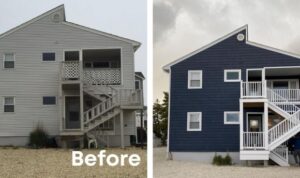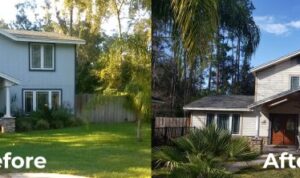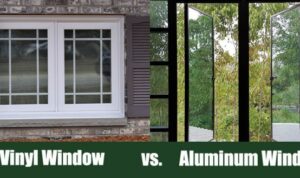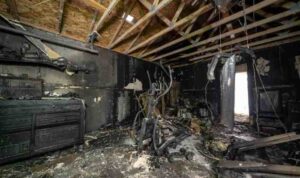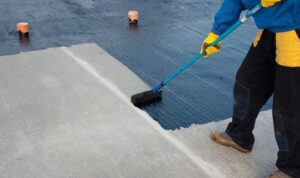Exploring the world of siding options for homes, this guide dives into the best choices available. From durability to aesthetics, we cover it all in this detailed overview.
Delve into the factors that influence siding selection and gain valuable insights into the installation process and maintenance requirements.
Types of Siding Materials
When it comes to choosing siding materials for homes, there are several options available, each with its own set of pros and cons. The most common types of siding materials include vinyl, wood, fiber cement, and metal.
Vinyl Siding
Vinyl siding is a popular choice due to its affordability, versatility, and low maintenance requirements. It comes in a variety of colors and styles, making it easy to customize the look of your home. However, vinyl siding may crack or fade over time, and it is not as durable as some other materials.
Wood Siding
Wood siding offers a natural and classic look that many homeowners appreciate. It is also environmentally friendly and can be easily painted or stained to match your preferences. However, wood siding requires regular maintenance, including painting, staining, and sealing to prevent rot, mold, and insect damage.
Fiber Cement Siding
Fiber cement siding is a durable and low-maintenance option that is resistant to fire, rot, and pests. It can mimic the look of wood or masonry without the same level of maintenance. However, fiber cement siding is heavier and may require professional installation.
Metal Siding
Metal siding, such as aluminum or steel, is known for its durability, resistance to pests, and minimal maintenance requirements. It is also fire-resistant and can be painted in various colors. However, metal siding may dent or scratch easily, and it can be more expensive than other materials.
Factors to Consider
When choosing the best siding for homes, there are several important factors to consider to ensure you make the right decision for your specific needs.
Impact of Climate
The climate of the area where your home is located plays a crucial role in determining the best siding material. For example, in regions with high humidity or frequent rain, you'll want a siding material that is resistant to moisture and mold.
On the other hand, in areas with extreme temperature fluctuations, you'll need a material that can withstand the heat and cold without warping or cracking.
Cost, Aesthetics, and Energy Efficiency
Cost is always a significant factor in any home improvement project, including siding installation. Consider not only the initial cost of the material but also the long-term maintenance and repair expenses. Aesthetics are also important as the siding you choose should complement the overall look of your home.
Additionally, energy efficiency is crucial for reducing heating and cooling costs. Opting for insulated siding can help improve the energy efficiency of your home, saving you money in the long run.
Installation Process
When it comes to installing siding on a home, there are several general steps involved to ensure a proper and durable finish. Whether you decide to tackle the project yourself or hire a professional, it's important to understand the process and the key factors that contribute to a successful installation.
General Steps for Siding Installation
- Prepare the surface: Make sure the walls are clean, dry, and free of any debris before starting the installation.
- Install moisture barriers: Properly install moisture barriers to prevent water infiltration and protect the structure of the home.
- Measure and cut siding panels: Accurately measure and cut siding panels to fit the dimensions of the walls.
- Secure the siding: Use appropriate fasteners to secure the siding panels to the walls, following the manufacturer's instructions.
- Finish the edges: Install trim pieces to finish the edges of the siding and provide a clean, polished look.
Tips for DIY vs. Professional Installation
- DIY: If you decide to install the siding yourself, make sure to carefully follow the manufacturer's instructions and take your time to ensure a precise finish.
- Professional: Hiring a professional ensures that the installation is done correctly and efficiently, saving you time and potential headaches down the road.
Importance of Insulation and Moisture Barriers
Proper insulation and moisture barriers are crucial during the siding installation process to protect the home from water damage, mold, and energy loss. Insulation helps regulate the temperature inside the home, while moisture barriers prevent water infiltration and potential structural damage.
Maintenance and Longevity
Maintaining your siding is crucial for ensuring the longevity and overall appearance of your home. Different types of siding materials require varying levels of maintenance to keep them looking their best and functioning properly.
Maintenance Requirements for Different Types of Siding Materials
- Vinyl Siding: Vinyl siding is relatively low maintenance, requiring occasional cleaning with soap and water to remove dirt and grime. Inspect for cracks or damage that may need to be repaired.
- Fiber Cement Siding: Fiber cement siding needs to be repainted every 5-10 years to maintain its appearance and protect against moisture. Regular cleaning with a mild detergent is also recommended.
- Wood Siding: Wood siding requires regular staining or painting every 3-7 years to prevent rot and water damage. Inspect for signs of insect infestation or rot and address promptly.
- Aluminum Siding: Aluminum siding should be washed annually to remove dirt and mildew. Inspect for dents or scratches that may need to be repaired to prevent corrosion.
Prolonging the Lifespan of Siding
To prolong the lifespan of your siding, regular upkeep is key. This includes cleaning your siding at least once a year, inspecting for damage or wear, and addressing any issues promptly to prevent further damage. Additionally, keeping trees and shrubs trimmed away from your siding can help prevent moisture buildup and damage.
Signs That Indicate Siding Replacement is Necessary
- Cracks or gaps in the siding that allow moisture to seep in.
- Significant fading or discoloration that detracts from the appearance of your home.
- Warped or buckling siding, which indicates underlying issues with moisture or structural integrity.
- Mold or mildew growth on the siding, which can indicate water damage and potential health hazards.
Final Summary
/-frost-covered-house-with-brick-vinyl-siding-184848661-58026be45f9b5805c236fd60.jpg?w=700)
In conclusion, choosing the best siding for your home is crucial for both functionality and curb appeal. This guide has equipped you with the knowledge needed to make an informed decision.
FAQ Corner
What is the most durable siding material?
Fiber cement siding is known for its exceptional durability and low maintenance requirements, making it a popular choice among homeowners.
How can I tell if my siding needs to be replaced?
Look out for signs such as cracks, warping, or extensive mold growth, indicating that it's time for a siding replacement.
Is vinyl siding a cost-effective option?
Yes, vinyl siding is relatively affordable compared to other materials and offers a good balance of cost and durability.

